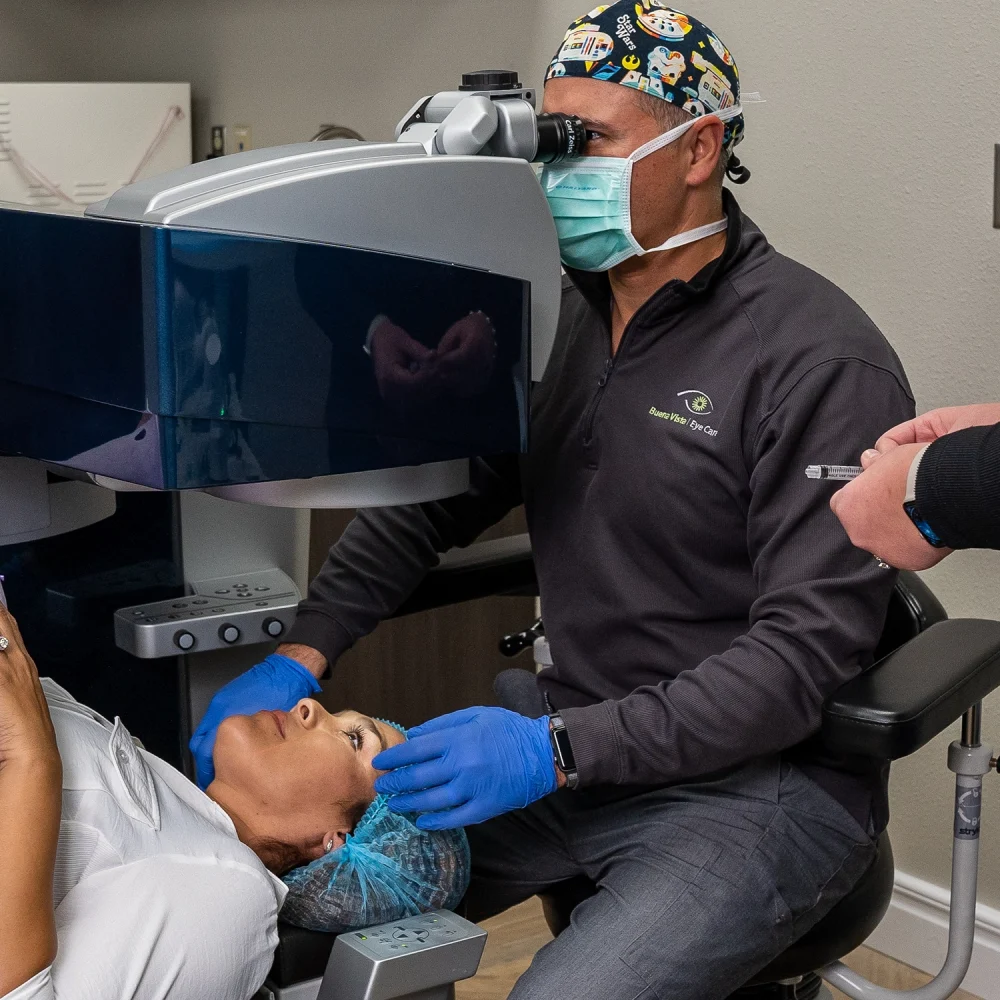
PRK vs LASIK: Understanding Your Laser Vision Correction Options
PRK vs LASIK: Choosing the Right Vision Correction Surgery
When it comes to laser vision correction, two terms often come to the forefront: PRK (Photorefractive Keratectomy) and LASIK (Laser-Assisted In Situ Keratomileusis). Both procedures aim to correct vision by reshaping the cornea, but they differ in approach and suitability for various patients. Understanding the nuances of PRK vs LASIK can help you make an informed decision about which surgical procedure aligns with your vision correction needs.
Reshaping the Cornea: The Core of Vision Correction
At the heart of both PRK and LASIK is the fundamental process of reshaping the cornea. This reshaping allows light to focus properly on the retina, improving vision clarity. The excimer laser is a pivotal tool in this process, meticulously sculpting the corneal tissue to correct refractive errors.
LASIK Eye Surgery: A Closer Look
LASIK eye surgery is renowned for its efficiency and quick recovery time. The procedure involves creating a thin corneal flap using a laser or a microkeratome. This flap is then lifted, allowing the excimer laser to reshape the underlying corneal tissue. After the reshaping, the flap is repositioned, serving as a natural bandage.

PRK Surgery: An Alternative Approach
PRK surgery stands as a viable alternative, especially for patients with thin corneas or those at a higher risk of eye injury due to their lifestyle or occupation. Unlike LASIK, PRK does not involve creating a corneal flap. Instead, the outer layer of the cornea (epithelium) is gently removed before the excimer laser reshapes the corneal tissue.
Dry Eyes and Laser Vision Correction
Both PRK and LASIK can temporarily affect tear production, leading to dry eyes. However, the risk and duration of dry eyes may vary between the two procedures. LASIK patients might experience dry eyes due to the corneal flap’s impact on nerve fibers, whereas PRK’s surface treatment approach might result in a different dry eye profile.
Key Points of PRK:
- No corneal flap creation, reducing the risk associated with flap complications
- The healing process is longer compared to LASIK, with a bandage contact lens placed on the eye to aid in recovery
- Particularly beneficial for individuals with thin corneas or those engaged in activities posing a higher eye injury risk
Understanding the Healing Process
The healing process is a significant differentiator between PRK and LASIK. LASIK’s recovery is notably quicker, with many patients resuming normal activities within a day or two. PRK’s recovery is more gradual, with vision stabilizing over a few weeks to months, although the end results can be equally rewarding.
Risks and Side Effects: A Balanced Perspective
Both surgical procedures come with their own set of risks and side effects. While LASIK’s corneal flap can lead to specific complications, PRK’s surface ablation method eliminates flap-related risks but requires a longer recovery period. Patients should discuss potential risks, like infection or vision anomalies, with their surgeon.
Laser Eye Surgery: Beyond the Basics
Whether it’s PRK or LASIK, the goal is to achieve optimal laser vision correction. Both procedures utilize advanced laser technology to correct vision, but the choice between them depends on individual eye characteristics and lifestyle considerations.
Numbing Eye Drops and Patient Comfort
Both procedures involve the use of numbing eye drops to ensure patient comfort. These drops help mitigate any discomfort during the laser application, making the experience as pain-free as possible.
Patients Report: Real Experiences with PRK and LASIK
Patients report high satisfaction rates with both PRK and LASIK. While LASIK offers a quicker return to daily activities, PRK recipients often highlight the procedure’s suitability for those with specific corneal conditions or lifestyle factors.
Thin Corneas: A Deciding Factor
For individuals with thin corneas, PRK may be the recommended choice. This procedure does not require the creation of a corneal flap, making it safer for those with less corneal tissue to work with.
Corneal Tissue: Preserving Integrity
Both procedures aim to preserve as much corneal tissue as possible while achieving the desired vision correction. The choice between PRK and LASIK can influence how corneal tissue is managed and conserved during surgery.
Bandage Contact Lens: Aiding PRK Recovery
After PRK, a bandage contact lens is placed on the eye to protect the surface while it heals. This lens is typically worn for several days, aiding in the recovery process and enhancing comfort.
Contact Lens Wearers: Transitioning to Surgery
For contact lens wearers considering laser eye surgery, a transition period may be required. This ensures the cornea returns to its natural shape before undergoing PRK or LASIK.
Risk of Eye Injury: Lifestyle Considerations
The risk of eye injury in various activities can influence the choice between PRK and LASIK. Those engaged in contact sports or occupations with higher eye injury risks may find PRK to be a safer option.
Excimer Laser: Precision in Reshaping
The excimer laser plays a crucial role in both PRK and LASIK, offering precise control in reshaping the cornea to correct vision. This advanced technology is at the core of successful laser vision correction.
LASIK Recovery: Fast and Effective
LASIK recovery is known for its speed, with many patients experiencing significant vision improvement almost immediately after surgery. This quick recovery is a key advantage for those seeking minimal downtime.

Choosing Between PRK and LASIK
Deciding between PRK and LASIK involves considering various factors, including corneal thickness, lifestyle, and personal preferences. Consultation with a qualified eye surgeon at Buena Vista Laser Center can provide tailored advice, helping you choose the procedure that best fits your vision correction goals.
At Buena Vista Laser Center, we’re committed to providing you with comprehensive information and expert care, whether you’re considering PRK or LASIK. Contact us today and follow us on social media to learn more about your laser vision correction options and take the first step toward clearer vision.

